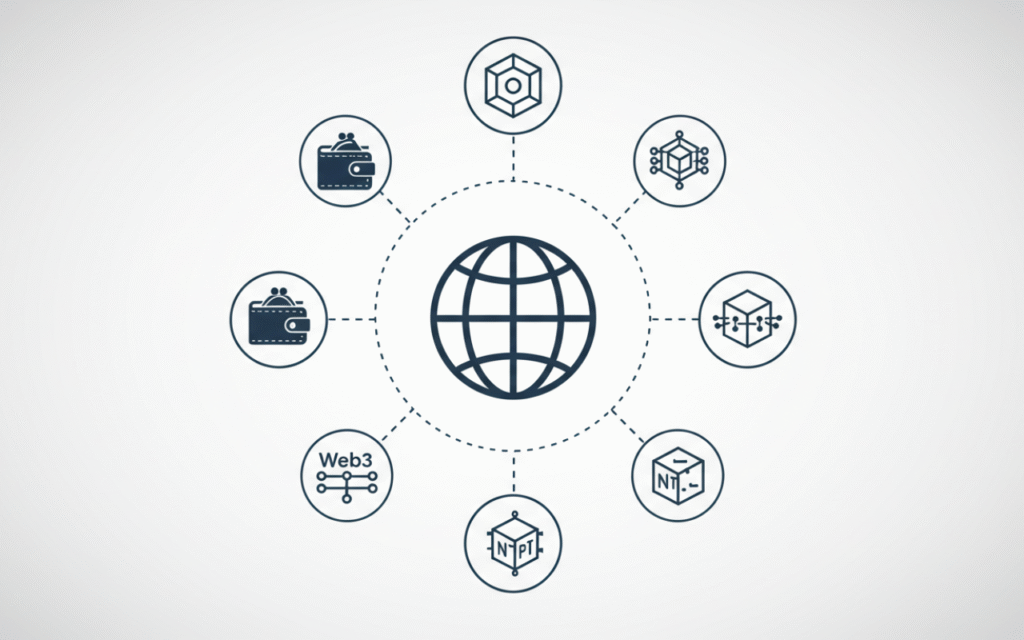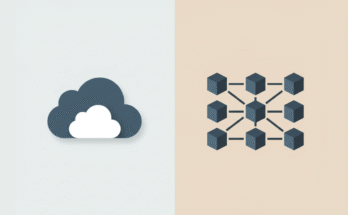Web3 projects are creating new pathways for secure, transparent, and user-driven interactions. From decentralized social media and regenerative finance platforms to the metaverse, these technologies are empowering users while revolutionizing digital landscape. These apps represent an unprecedented opportunity for more inclusive, transparent, and decentralized systems.

1. Artificial Intelligence
Artificial intelligence will play a pivotal role in Web3 by 2025, providing faster and more efficient processes while eliminating human biases and weaknesses. The best dApps will efficiently scale to accommodate expanding user bases without compromising performance, while incorporating layer-2 solutions that increase scalability and security.
One such blockchain-based metaverse offering a play to earn gaming experience is Affyn. The platform enables players to exercise ownership over in-game assets such as loyalty points and NFTs while also giving them the option to transfer these assets between accounts.
2. Crypto Payment Gateway
If your company is exploring Web3 development, an experienced Web3 engineering firm can guide them through the intricacies of this revolutionary technology. By tailoring a custom solution specifically to meet your business goals using blockchain, decentralized protocols, and smart contracts.
Many of the top Web3 projects focus on mitigating scalability issues and transaction fees, such as zkRollups and Optimistic Rollups which allow faster transactions while lowering gas fees on Ethereum. Similarly, Derby Stars gives players ownership of digital horses they can trade between each other for digital horses in virtual racing competition.
3. Decentralized Identity Management
Signing up for new services often results in divulging more personal data than we realize birthdays, addresses, phone numbers. Decentralized identity makes things different by giving users full ownership over their digital identities.
As one example, Brave browser uses blockchain technology to protect user privacy and block ads that invade privacy, while VulcanVerse enables players to exercise ownership over in-game assets such as NFTs while playing. Furthermore, this platform rewards its participants for participating.
4. Social Media Platforms
Web3 projects empower users by offering new experiences that prioritise data and content ownership, while simultaneously supporting a decentralized economy with strategies like pay to earn gaming and creator tokens for monetization purposes.
Examples include federated social networks like Mastodon and Minds, e-commerce platforms like Uniswap and Compound, decentralized storage solutions like LBRY and Storj, as well as browser ad blockers like Brave that block ads as well as marketplaces such as OpenSea and Rarible that enable NFT transactions. Platforms which reduce dependency on Web2 intermediaries while enabling users to take their data with them when leaving.
5. Regenerative Finance
Regenerative finance uses the principles of regenerative economics to advance ecological and social well-being, with an aim of democratizing financial markets while contributing to ecosystem regeneration and sustainability. Web3 projects like LBRY and Moss provide effective frameworks to reach this objective. Moss innovative carbon offset approach combines regenerative finance with blockchain technology for increased transparency, accountability and scalability.
Web3 offers users an efficient means of managing their own content without depending on centralized tech firms for management, providing an increased sense of privacy and improved security with no central point of failure.
6. BaaS
BaaS is a system that enables non-bank businesses to offer banking services without being subject to regulatory oversight, enabling them to focus on providing core products while outsourcing risk management and infrastructure support to regulated institutions.
Neobanks like N26, Starling, and Revolut used banking-as-a-service (BaaS) products from established banks like Deutsche Bank or Santander before receiving bank licenses themselves. Their apps utilized the services purchased from these regulated institutions before white labelling them for their users. Web3 promises to revolutionize the Internet by giving people more control of their data and digital identities. A team of qualified Web3 developers can assist your business in meeting this objective.
7. NFT Marketplace
NFT provides businesses with vast opportunities. Salesforce recently unveiled an integration that will allow companies to implement NFT loyalty programs. NFT Marketplaces provide users with access to an assortment of digital assets and tokenized experiences, built on robust Layer-1 blockchain networks for maximum speed, scalability and security.
NFTs have quickly become an indispensable technology for brands like Gucci and Louis Vuitton, helping to verify authenticity and offer exclusive ownership perks to consumers. In sports, NFTs have also revolutionized memorabilia collecting, NBA Top Shot is leading this movement by offering important basketball moments hosted on the Flow blockchain as NFTs for consumers to purchase.
8. Metaverse
The Metaverse is an internet that provides people with virtual spaces to network and socialize in. Similar to Second Life, users can outfit avatars and purchase mansions. However, unlike Second Life, users are free to travel multiple virtual worlds simultaneously in the metaverse.
The metaverse is increasingly becoming an asset in various industries, particularly marketing and advertising. As graphics and capabilities advance further, its viability increases. Companies should stay abreast of developments in this space in order to prepare for its arrival.
9. Smart Contracts
Expect an increase in AI-powered oracles that bridge off-chain and on-chain data by 2024, which will support an array of applications on blockchains such as predictive analytics and decentralized finance protocols. Real-world assets will soon be tokenized to create new monetization opportunities, like when bands create non-fungible tokens (NFTs) for every piece of music they release as a way of building loyalty with fans. The Graph is a key Web3 development that enables developers to access blockchain data without relying on centralized servers, providing greater security and long-term integrity for users.
10. Blockchain Technology
Blockchain technology is revolutionizing the internet by giving users more control of their data and digital interactions. As 2025 approaches, new applications such as micropayments and decentralized finance (DeFi) may arise using Blockchain.
However, blockchain’s technical powers have created an obstacle for non-technical users who do not possess technical backgrounds. Complex user interfaces and jargon may be daunting to newcomers while the security risks involved with managing private keys may deter people. As such, developers have begun working towards streamlining user experience. Their goal being making Web3 accessible and making its benefits available to more people than ever. Eventually the blockchain will continue its progress forward.



